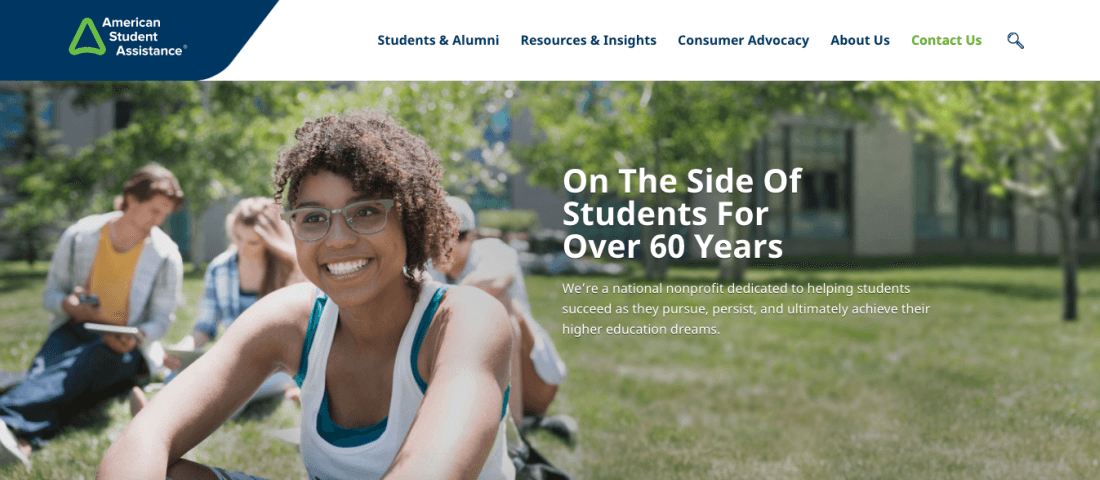
U.S. households are carrying $1.4 trillion in student debt according to the latest analysis by Experian, a consumer credit reporting agency. That’s a lot of education loans and, in fact, Experian’s analysis shows that more than 13 percent of U.S. consumers have one or more on their credit file.
While loans are a valuable tool for financing higher education, they can easily become a financial burden. Though Experian’s data reveals 66 percent of consumers with student loans are currently repaying them, 23 percent are in deferment. During student loan deferment interest continues to accrue, causing loan balances to increase. This extends repayment time, increases the cost of the loans overall, and can lower your credit score as a result.
Fortunately, industry-leading nonprofit American Student Assistance has your back. Dedicated to helping students make their higher education dreams a reality in a financially responsible away, the organization offers a variety of valuable resources.

Eliminating Barriers
“American Student Assistance is dedicated to eliminating finance as a barrier to education and the dreams education enables,” said Allesandra Lanza, Director of Communications at American Student Assistance’s Center for Consumer Advocacy. “We seek to ensure no one fails to realize the full potential and benefits of their education simply because of finances.”
While the organization’s resources—from Salt, a student consumer financial education program, to the Center for Consumer Advocacy, which drives awareness and informs public policy on student debt—are available to students and alumni of any age, a recent joint study by American Student Assistance and the National Association of Realtors found that student loan debt is having particularly serious effects for Millennials.
Conducted in April, the survey of more than 2,000 student loan borrowers between the ages of 22 and 35 revealed that this generation of consumers is struggling with everything from homebuying and advancing their careers to starting families and saving for retirement because of education debt.
The study found that the average student debt load among Millennials is $41,200, while their average annual income is only $38,800. Only 20 percent of those surveyed own a home, and among the 80 percent who do not, 83 percent said their student loan debt has affected their ability to buy.
An additional 86 percent stated that they had made sacrifices in their professional careers—such as taking second jobs, staying in jobs they don’t like, or taking jobs outside their chosen field—because of their debt. And more than half said they’ve delayed continuing their education or starting a family. Not surprisingly, 61 percent have sometimes been unable to make contributions to their retirement savings accounts.
“The results of this survey, and many other recent studies, continue to illustrate student debt’s impact on the broader economy,” Lanza explained. “When student debt holds whole generations back from starting families, buying first homes or upgrading, starting businesses, or saving for retirement or a child’s education, the economy can suffer.”
“That’s why we need multiple parties to come together with comprehensive solutions that both lower student debt amounts on the front-end for future students, and enable the 44 million Americans who already have student debt to retire it successfully while still being able to pursue other financial goals,” she said.

Income-Based Repayment as a Solution
Lanza encouraged consumers who are having problems making their student loan payments to look into income-based repayment options for their federal student loans. “This will cap their payment at approximately 10 to 15 percent of their disposable income, with any remaining balance forgiven after 20-25 years,” she said.
When the burden of unaffordable loan payments is relieved in this way, consumers can direct more of their income towards big life steps such as home buying and saving for retirement. “For those who are specifically trying to deal with student debt and apply for a mortgage, there have been a number of recent changes to the mortgage process that may help ease their situation,” she added.
These include significant changes to the underwriting rules of Fannie Mae, a government-sponsored enterprise that purchases and guarantees home mortgages. “Readers can learn all about the various student loan repayment plans on our website for education consumers, saltmoney.org,” Lanza concluded. “While you do need to sign up to access content, signing up is free. We also provide loan counseling to the students and alumni of the colleges and universities we partner with.”
To learn more about American Student Assistance and the resources available, visit asa.org.
